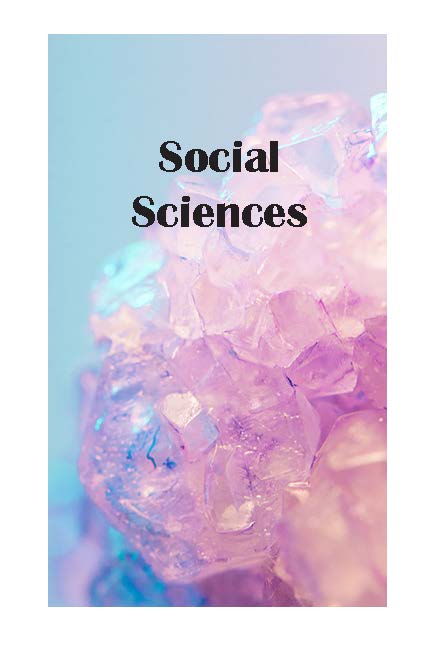Discrimination in the College Classroom
Main Article Content
Abstract
Discrimination occurs in many forms. In the college classroom, discrimination raises questions of equity and can ultimately influence the success and outcomes of students. The research in this paper explores whether certain college classroom environments promote the development of discrimination. Through the review of secondary data analysis, including surveys around racism, sexism, and sexual orientation discrimination, experiences were examined to find the common themes and situations that lead to discrimination occurring in the classroom. Results show that how the professor sets the tone in the classroom, as well as how aware the professor is of unintentional biases and what the response is to these, heavily influence how other students behave.
Downloads
Article Details

This work is licensed under a Creative Commons Attribution-NonCommercial 4.0 International License.
Authors who publish with this journal agree to the following terms:
- Authors retain copyright and grant the journal right of first publication with the work simultaneously licensed under a Creative Commons Attribution License that allows others to share the work with an acknowledgement of the work's authorship and initial publication in this journal.
- Authors are permitted and encouraged to post their work online (e.g., in institutional repositories or on their website) prior to and during the submission process, as it can lead to productive exchanges, as well as earlier and greater citation of published work (See The Effect of Open Access).
- Student authors waive FERPA rights for only the publication of the author submitted works.
Specifically: Students of Indiana University East voluntarily agree to submit their own works to The Journal of Student Research at Indiana University East, with full understanding of FERPA rights and in recognition that for this one, specific instance they understand that The Journal of Student Research at Indiana University East is Public and Open Access. Additionally, the Journal is viewable via the Internet and searchable via Indiana University, Google, and Google-Scholar search engines.
References
Columbia University's Graduate School of Arts & Sciences Teaching Center. (n.d.). Gender Issues in the College Classroom. https://edisciplinas.usp.br/pluginfile.php/3753817/mod_resource/content/1/Columbia%20Gender%20Issues%20college.pdf.
Cooper, K. M., & Brownell, S. E. (2016). Coming Out in Class: Challenges and Benefits of Active Learning in a Biology Classroom for LGBTQIA Students. CBE—Life Sciences Education, 15(3). https://doi.org/10.1187/cbe.16-01-0074 Cornell Law School. (n.a.).
Equal Protection and Race. Legal Information Institute. https://www.law.cornell.edu/constitution-conan/amendment-14/section-1/equalprotection-and-race.
Covarrubias, P. O. (2008). Masked Silence Sequences: Hearing Discrimination in the College Classroom. Communication, Culture & Critique, 1(3), 227–252.
https://doi.org/10.1111/j.1753-9137.2008.00021.x
Foley, B. (2019, May 4). Benefits of Using Secondary Data Analysis for Your Research. https://www.surveygizmo.com/resources/blog/secondary-data-analysis/.
Ganley, C. M., George, C. E., Cimpian, J. R., & Makowski, M. B. (2017). Gender Equity in College Majors: Looking Beyond the STEM/Non-STEM Dichotomy for Answers
Regarding Female Participation. American Educational Research Journal, 55(3), 453–487. https://doi.org/10.3102/0002831217740221
Graham-Bailey, M., Cheeks, B. L. R., Blankenship, B. T., Stewart, A. J., & Chavous, T. M. (2019). Examining college students’ multiple social identities of gender, race, and 19 socioeconomic status: Implications for intergroup and social justice attitudes. Journal of Diversity in Higher Education, 12(4), 377–389. https://doi.org/10.1037/dhe0000098
Harper, S. R., & Davis, C. H. F. (2016). Academe, 31–34. https://webapp.usc.edu/web/rossier/publications/231/Harper%20and%20Davis%20(2016).pdf.
HERI. (2019). Diverse Learning Environments Survey. CSUSM. https://www.csusm.edu/ipa/surveys/dle.html.
Johnston, M. (2017). Secondary Data Analysis: A Method of which the Time Has Come. Qualitative And Quantitative Methods In Libraries, 3(3), 619-626. Retrieved from http://www.qqml-journal.net/index.php/qqml/article/view/169
Lavrakas, P. J. (Ed.). (2008). Purposive Sample. Encyclopedia of Survey Research Methods. https://doi.org/10.4135/9781412963947.n419
Marken, S. (2020, June 23). Alumni Rate Colleges' Responsiveness to Discrimination. https://news.gallup.com/poll/311297/alumni-rate-colleges-responsivenessdiscrimination.aspx.
Mcleod, S. (1970, January 1). Social Identity Theory. Social Identity Theory | Simply Psychology. https://www.simplypsychology.org/social-identity-theory.html.
Merriam-Webster. (n.a.). Discrimination. Merriam-Webster.com dictionary. https://www.merriam-webster.com/dictionary/discrimination.
RWJF. (2020, August 31). Discrimination in America: Experiences and Views. https://www.rwjf.org/en/library/research/2017/10/discrimination-in-america-experiences-and-views.html.

